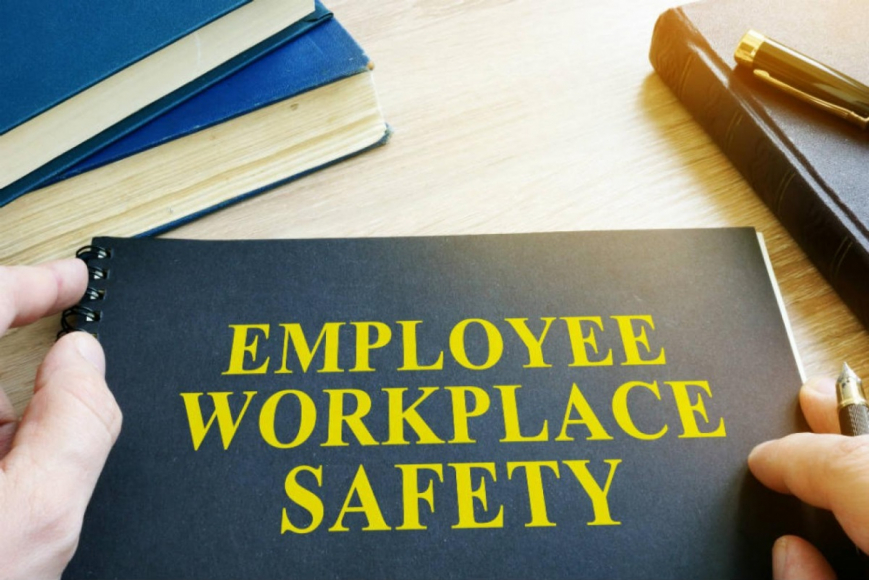Coworking spaces are all the rage--but many say they aren't liable for injuries that happen in their offices and don't provide H&S provisions. Learn what you need to do to make sure your shared workplaces are safe.
Shared office spaces, also known as coworking spaces, are a new and popular option for companies seeking flexible working arrangements—it’s estimated that there will be 21,306 coworking spaces around the world by 2019, and that number is expected to grow 23% by 2022. They offer several perks: coffee, collaborative spaces, shared desks, private offices, kitchens, and meeting rooms, often at more affordable prices than traditional offices. But what many coworking workspaces don’t provide (or aren’t responsible for) is health and safety.
Many of our clients that rent shared office spaces have been caught off guard after signing a lease when they find out that the company that runs the shared office space has no obligation to provide emergency response drills, first aid kits, evacuation maps, or other key elements of health and safety (H&S) for those who work there. On top of this, many coworking spaces do not assume responsibility or liability for any incidents that happen in the office, leaving unprepared leasers without a plan in place. We’ll walk through how to navigate health and safety before signing a shared office space lease, key health and safety items to have in place, and extra tips and tricks to ensure your employees are safe no matter where they work.
Understand Your Liability Before Signing the Lease
While many think of “due diligence” as a more serious process for buying companies and real estate, due diligence is also an important process to go through before signing a lease or any kind of agreement with a coworking office space.
Due diligence, in this case, involves walking through the office space, taking note of what’s there, and talking with your company EHS team and interviewing the facility team at your future coworking space to cover your H&S bases.
Before you bring your team to visit the site, create an inspection checklist that details the health and safety items, procedures, and plans you require and will look for during a site inspection. If you’re going to be setting up shop in several new offices in different geographies, this is even more important—in our experience, many coworking spaces in countries outside of the U.S. provide different (or fewer) H&S provisions.
Review the lease terms closely and look for any indications that the property owners assume any, some, or no health and safety liability. To discover which health and safety items and plans you’ll need to provide to meet your minimum EHS service expectations, take a tour through the space and use your inspection checklist to mark off things like fire suppression systems, fire prevention equipment, adequate emergency exit routes, adequate exit signage and emergency lighting, first aid supplies, and other items.
While you’re there, talk with the building owner/manager to see if regular emergency evacuation drills are conducted for the benefit of the tenants and that they have a system for ensuring emergency exit routes are not blocked or locked by accident. Ask a few questions regarding their experience with and understanding of health and safety concerns. If your company will be responsible for supplies such as fire extinguishers and first aid kits, make sure you set up a system to keep extinguishers charged and first aid kits filled with fresh supplies.
Shared Office EHS Must-Haves
After finding common ground and getting on the same page with the coworking facility team, it’s time to nail down the necessary preparations for creating a safe, shared space.
Companies (and the countries they reside in) have varying health and safety requirements for low-risk spaces, but here are some important examples to consider before you move in:
- Evacuation Map – An accurate evacuation map that is displayed somewhere accessible for all employees is a must. Maps help employees determine how to safety exit the building in case of an emergency.
- Emergency Action Plan (EAP) – A plan that includes information on how, where, and when to exit the building, shelter in place, and other steps to take during an emergency of any kind (natural disasters, active threat, fire, and others). An EAP is necessary to ensure the safety and preparedness of your coworking employees.
- Emergency Evacuation Drills– Regular drills and trainings that explain emergency exit locations, what to do in case of an emergency, and how/where to shelter-in-place. Even if your employees won’t be working in the shared office full-time, conducting drills and providing trainings and practices for fires and other emergencies is a must. Have a plan on how to ensure everyone has exited safely—a group text is helpful when workers are mobile.
- General EHS Awareness – Prepare your employees on general low-risk office concerns and teach them how to respond appropriately. Many shared offices have changing desk configurations, new people from other companies moving things around, and other environmental changes, but if your employees know how to deal with them (and who to call), they can feel confident at work and reduce risks.
Go Above & Beyond for Coworking Comfort
Office health and safety should include more than just the essentials—other factors can and do play a role in your coworking employees’ health and productivity at work.
While not legally required in most states, ergonomics shouldn’t be overlooked in flexible office settings. Finding out what kind of space you’ll be renting beforehand is key to knowing how much you can influence ergonomics. Many shared spaces in coworking offices have set and unchangeable tables, chairs, and desks, meaning that you can’t change the environment. However, if you’re renting a private space, you can conduct ergonomics assessments and provide ergonomic accessories that match the needs of your employees. Make sure you provide information to employees on how to request an ergonomic assessment.
The open concept style of many collaborative offices has a few downsides—it’s pretty easy to get sick. Provide antibacterial wipes and create signs or handouts that encourage employees to wipe down their shared space before and after use to stop the spread of germs. They can also be noisy—so consider issuing a headphone/earbud policy— addressing the need for quiet, protected hearing and not blocking the sound of nearby emergencies/fire alarms.
It’s All About EHS Culture
Above all, you should integrate your coworking offices with your company health and safety culture. While employees might work in all sorts of office spaces, from traditional to coworking to working from home, bringing your EHS mission to the forefront and exploring how it integrates with everyday work style will show employees that you prioritize their health and comfort.
Communicate any health and safety changes or updates to employees moving to a shared space office, especially if they haven’t worked in a shared space before. Make sure that you’re clear and direct with your expectations of them in their new space. To really bring EHS home, provide tools to enable employee feedback, make it easy to access H&S information, and emphasize the importance of safety through regular communications.
Need EHS support for your new office space? Find out more about RiskRight EHS, our fit-for-purpose suite of EHS services specifically tailored to low-risk facilities.
Want more news and insights like this?
Sign up for our monthly e-newsletter, The New Leaf. Our goal is to keep you updated, educated and even a bit entertained as it relates to all things EHS and sustainability.
Get e-Newsletter



